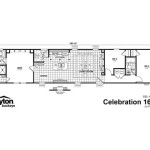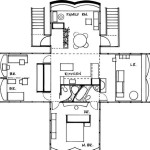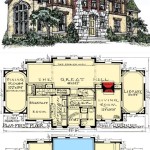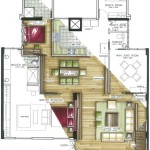Small House Plans: Open Concept
Open-concept floor plans have revolutionized home design, particularly for smaller homes. By removing internal walls that traditionally separate living spaces like the kitchen, dining room, and living room, open-concept designs create a sense of spaciousness and flow. This layout is especially advantageous in small houses, where maximizing every square foot is crucial.
One of the primary benefits of open-concept design in small houses is the illusion of greater size. The unobstructed sightlines from one area to another make the space feel larger than its actual square footage. Natural light can also penetrate deeper into the home, enhancing the airy and open ambiance.
Enhanced social interaction is another key advantage. With the kitchen, dining, and living areas integrated, family members and guests can easily interact, even while engaged in different activities. This fosters a sense of togetherness and makes entertaining more convenient and enjoyable.
Flexibility in furniture arrangement is a significant benefit of open-concept plans. Homeowners are not confined by traditional room divisions and can arrange furniture to suit their specific needs and lifestyle. This adaptability is particularly beneficial in small homes, where optimizing furniture placement is essential for maximizing functionality.
Open-concept designs can also simplify traffic flow within the home. Without walls and doorways to navigate, movement between different areas becomes seamless and efficient. This is particularly advantageous for families with children or individuals with mobility limitations.
However, open-concept plans also present certain challenges. Noise control can be an issue, as sound travels easily throughout the connected spaces. This can make it difficult to contain noise from activities like cooking or watching television. Strategic placement of rugs and soft furnishings can help absorb some sound and mitigate this issue.
Maintaining visual order can also be more challenging in an open-concept layout. With everything visible from multiple vantage points, clutter in one area can impact the overall aesthetic of the entire space. Implementing effective storage solutions and adopting a minimalist approach to décor can help maintain a tidy and organized appearance.
Privacy can be another concern in open-concept small houses. The lack of walls between living spaces can limit opportunities for individual privacy or quiet time. Strategic use of furniture placement, such as bookshelves or screens, can create subtle divisions within the open space and provide a degree of privacy.
When considering an open-concept design for a small house, careful planning is essential. Thoughtful space planning and furniture selection are crucial to maximizing functionality and ensuring that the space doesn't feel cluttered or overwhelming.
Lighting plays a vital role in defining different zones within an open-concept space. Employing a variety of lighting fixtures, including ambient, task, and accent lighting, can help delineate the various functional areas and create a sense of visual separation. For instance, pendant lights over a kitchen island can define the cooking area, while strategically placed floor lamps can create a cozy reading nook in the living area.
Choosing the right color palette is also critical in open-concept small house plans. Light and neutral colors are often favored as they help create a sense of airiness and make the space appear larger. Accent colors can be introduced through furniture, textiles, and artwork to add personality and visual interest.
Defining different zones within the open space is crucial for creating a sense of order and functionality. Area rugs can be used to delineate the living area, while a different flooring material can be used to define the kitchen space. These visual cues help create distinct zones without the need for physical walls.
Incorporating multifunctional furniture is a smart strategy in open-concept small houses. Pieces that serve multiple purposes, such as a sofa bed or a dining table that can double as a workspace, can help maximize functionality and save valuable space.
Storage solutions are paramount in open-concept small houses. Built-in shelves, cabinets, and drawers can help maximize storage space and keep clutter at bay. Utilizing vertical space effectively is also essential, with tall bookshelves and wall-mounted storage units being particularly beneficial.
Considering these factors, careful planning and design can result in a functional and aesthetically pleasing open-concept small house that maximizes space utilization and enhances the overall living experience.
Exploring different small house plan options featuring open-concept layouts is essential to finding the perfect design to suit individual needs and preferences. Online resources and architectural design firms offer a wealth of inspiration and practical guidance for those considering an open-concept small house.

Open Concept Two Bedroom Small House Plan Other Examples At This Link Plans Tiny Floor Sims

10 Small House Plans With Open Floor Blog Homeplans Com

10 Small House Plans With Open Floor Blog Homeplans Com

Single Story House Designs Open Plans Concept Floor
10 Small House Plans With Open Floor Blog Homeplans Com

Small Cottage House Plans With Modern Open Layouts Houseplans Blog Com

Modern Small House Plans And Design Ideas Floor Plan Open Concept Kitchen Living Room Guest One Bedroom

10 Small House Plans With Open Floor Blog Homeplans Com

Small Cottage House Plans With Modern Open Layouts Houseplans Blog Com

10 Small House Plans With Dreamy Amenities Blog Dreamhomesource Com








